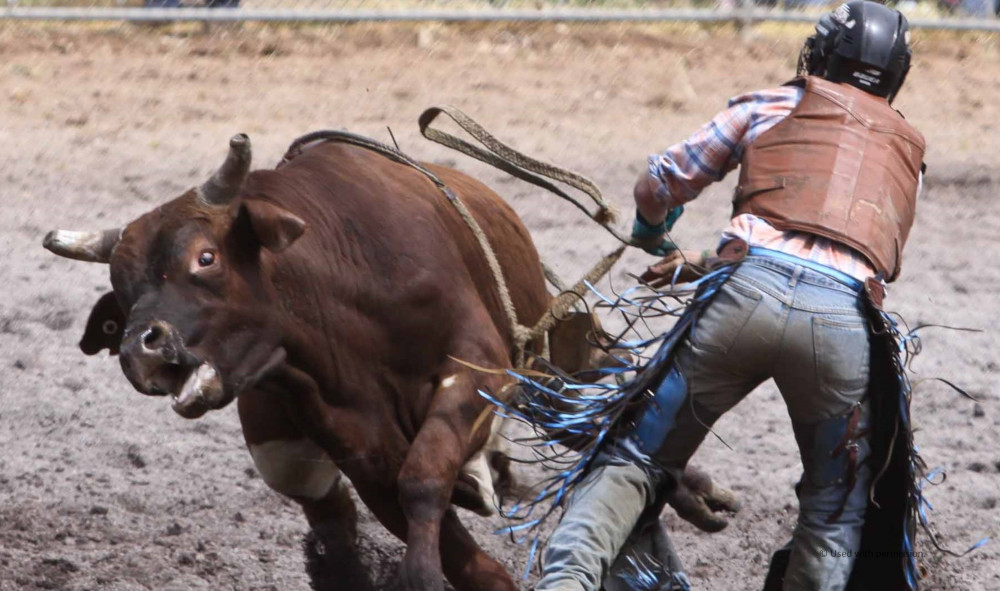Is bull riding considered animal cruelty? This question looms large in the hearts and minds of animal rights activists and rodeo enthusiasts alike. Rodeo culture, steeped in tradition and spectacle, presents a unique conundrum where the exhilaration of sport clashes with ethical considerations surrounding the treatment of animals. As spectators cheer for cowboys to conquer ferocity and defy gravity, one must ponder—at what cost to the animal? This article seeks to delve into the murky waters of rodeo ethics, examining the intersection between entertainment and animal welfare.
To understand the ethical implications of bull riding, it is essential to first grasp what bull riding entails. In the traditional rodeo arena, skilled cowboys endeavor to remain atop a bucking bull for a designated period, typically eight seconds. A furious display of strength and agility ensues, with the bull attempting to dislodge its rider through ferocious bucking, twisting, and turns. The bull, a silent but powerful participant, is central to this high-stakes performance. However, the question remains—are these animals treated humanely in pursuit of this sport?
Advocates of rodeo often argue that bull riding is not inherently cruel, as professional riders prioritize the animals’ health and welfare. Notably, many ranchers and rodeo organizers maintain that their bulls are bred and trained specifically for such competitions. They assert that the animals experience stimulation and enjoyment through their natural instincts and behaviors when bucking. Yet, juxtaposed against these pro-rodeo sentiments is a growing body of evidence that suggests otherwise.
Critics highlight several welfare concerns associated with bull riding and rodeos in general. Prominent among these issues is the practice of using flank straps, which are applied tightly around the bull’s flank to encourage bucking. This device, while designed not to cause injury, raises significant ethical questions. It could be argued that the mere imposition of discomfort to elicit a specific reaction contradicts humane treatment. The experience of fear, stress, and resultant pain in animals cannot be dismissed as inconsequential.
In addition to the flank strap controversy, the dangers faced by bulls in the rodeo environment further compound this ethical quandary. Animals are often subjected to loud noises and chaotic surroundings that can induce significant anxiety. The constant training for high-octane performances also subjects them to physical stress and injuries. As these animals grapple with the demands of competition, one may ponder—are they truly willing participants in this spectacle, or mere commodities for human amusement?
Beyond the immediate concerns over welfare, bull riding also engenders broader animal rights discussions. The ethical principles of utilitarianism, which advocate for the greatest good for the greatest number, come into play. Rodeo proponents may argue that their passion for the sport brings joy to countless spectators, thus providing societal value. Conversely, opponents maintain that the suffering inflicted upon bulls ultimately outweighs any fleeting entertainment value, leading to a moral imperative for change.
The landscape of public opinion surrounding bull riding is indeed shifting. As awareness of animal welfare issues burgeons, voices advocating for the ethical treatment of animals have grown louder. Increasingly, various organizations have emerged, contesting the justification of bull riding and other rodeo events on ethical grounds. Calls for greater transparency in how these animals are kept and treated are now at the forefront of many discussions.
The advent of social media has amplified these debates, enabling activists to showcase the behind-the-scenes realities of bull riding. Images and videos documenting distressed animals and the unsanitary conditions of some rodeos have garnered significant attention. This has prompted a reevaluation of rodeo ethics, igniting public outrage and resultant movements demanding change. The dichotomy between entertainment and ethics is becoming a focal point in the national consciousness.
Nevertheless, the rodeo community has put forth a counter-narrative, positing that their traditions have deep roots and cultural significance worth preserving. Rodeos are often heralded as a celebration of cowboy heritage, and many view them as a rite of passage within certain regional cultures. Proponents assert that rodeo athletes work hard to ensure their bulls remain healthy and well-cared for, counteracting notions of cruelty. This passionate defense complicates the dialogue, illustrating the multifaceted nature of rodeo ethics.
In light of this burgeoning discourse, one must consider potential avenues for reform that might align the enjoyment of the sport with humane treatment of the animals involved. Implementing stricter regulations to ensure the ethical treatment of rodeo animals, education about animal welfare practices, and increased oversight could serve as a starting point. Additionally, engaging the public in conversations about the ethical implications of their enjoyment can foster a greater understanding of the complexities at play.
Ultimately, the question of whether bull riding constitutes animal cruelty is not easily answered. It invokes a spectrum of opinions, steeped in cultural significance, individual belief systems, and the very essence of what it means to ethically interact with animals. As society grapples with its responsibilities toward sentient beings, the discourse surrounding bull riding and rodeo ethics will undoubtedly continue to evolve. Will traditional rodeos adapt to modern sensibilities, or will they persist as stalwart monuments of a bygone era? The path forward remains to be seen, and it beckons a reexamination of the delicate balance between human entertainment and animal welfare.









